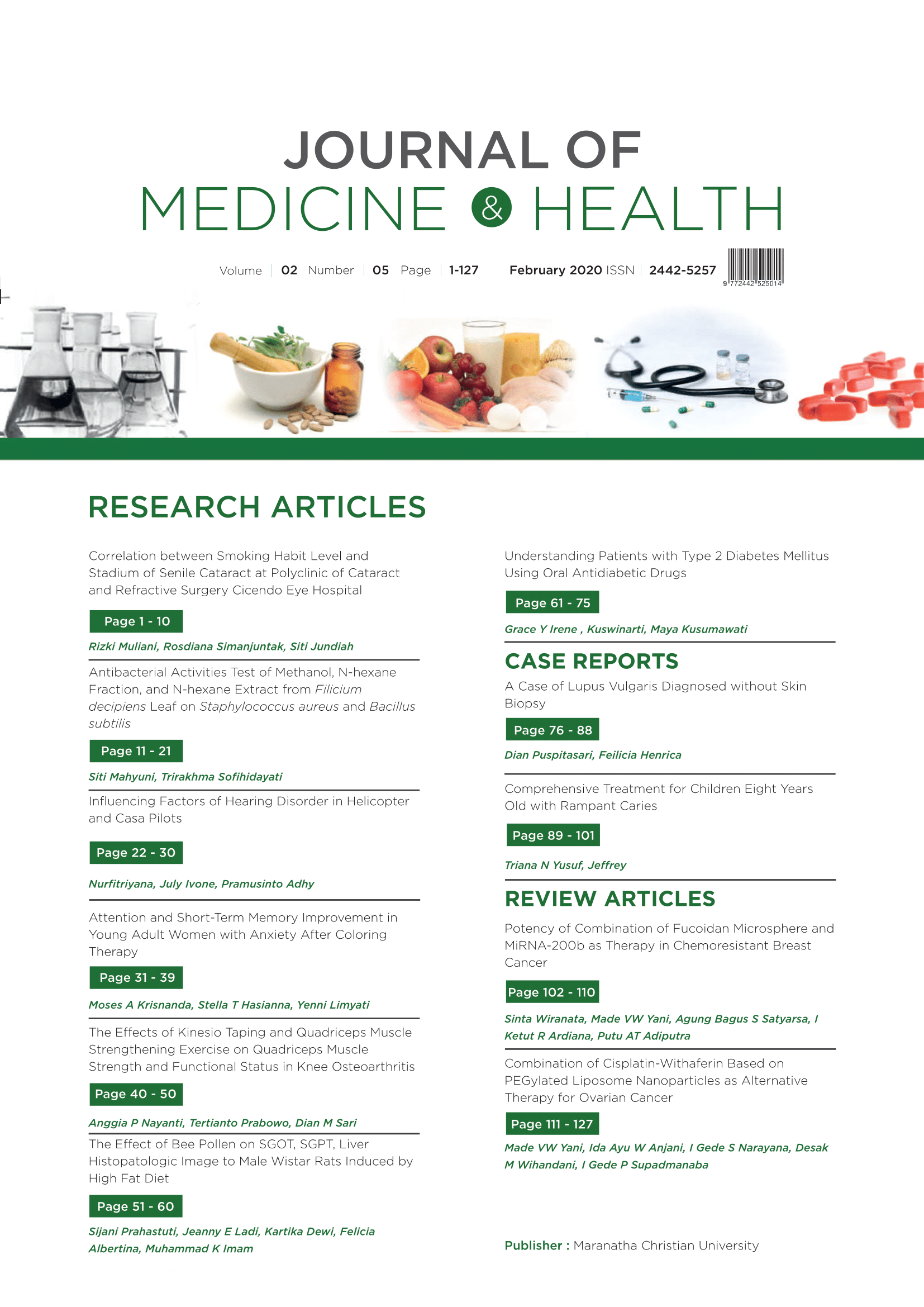Understanding Patients with Type 2 Diabetes Mellitus Using Oral Antidiabetic Drugs
DOI:
https://doi.org/10.28932/jmh.v2i5.1110Abstract
Uncontrolled hyperglycemia in people with diabetes mellitus can increase the risk of diabetes complications and comorbidities. This study aimed to determine the demographic, clinical, history, complications, and comorbid characteristics of diabetes. The study was conducted with a descriptive method and cross-sectional research design. Data were collected retrospectively using medical record data and using the Finite Population Correction formula with a sample of 115. The results showed the majority of patients were female (67.8%), aged ? 65 years (40.0%), residing in urban (87.6%), high school graduates (35.2%), and unemployed (63.6%). Patients generally have a normal BMI (45.9%) and have several variables that reach the target, namely fasting blood glucose (50.4%), triglycerides (55.3%), and creatinine (69.6%). Patients also had several variables that did not reach the target, namely postprandial 2 hour blood glucose (51.3%), blood pressure (65.8%), total cholesterol (55.6%), HDL cholesterol (54.5%), LDL cholesterol (80.0%), and urea (56.0%). Patients who use oral anti-diabetes generally have used it <5 years (76.3%) and used monotherapy (63.5%). Neuropathy (42.6%) and hypertension (85.9%) were the most common complications and comorbidities of diabetes in this study. Strict glycemic control is an important management for people with diabetes mellitus. Keywords: oral antidiabetic drugs; diabetes mellitus; comorbidDownloads
Download data is not yet available.
Downloads
Published
2020-02-27
How to Cite
1.
Irene GY, Kuswinarti K, Kusumawati M. Understanding Patients with Type 2 Diabetes Mellitus Using Oral Antidiabetic Drugs. J. Med. Health [Internet]. 2020Feb.27 [cited 2025Dec.26];2(5). Available from: http://114.7.153.31/index.php/jmh/article/view/1110
Issue
Section
Articles
License
Authors who publish with this journal agree to the following terms:
- Authors retain the copyright and grant the journal right of first publication with the work
simultaneously licensed under a Creative Commons Attribution-NonCommercial 4.0 International License that allows others to share the work with an acknowledgement of the work's authorship and initial publication in this journal. - Authors are able to enter into separate, additional contractual arrangements for the nonexclusive distribution of the journal's published version of the work (e.g., post it to an institutional repository or publish it in a book), with an acknowledgement of its initial publication in this journal.
 This work is licensed under a Creative Commons Attribution-NonCommercial 4.0 International License.
This work is licensed under a Creative Commons Attribution-NonCommercial 4.0 International License.

















